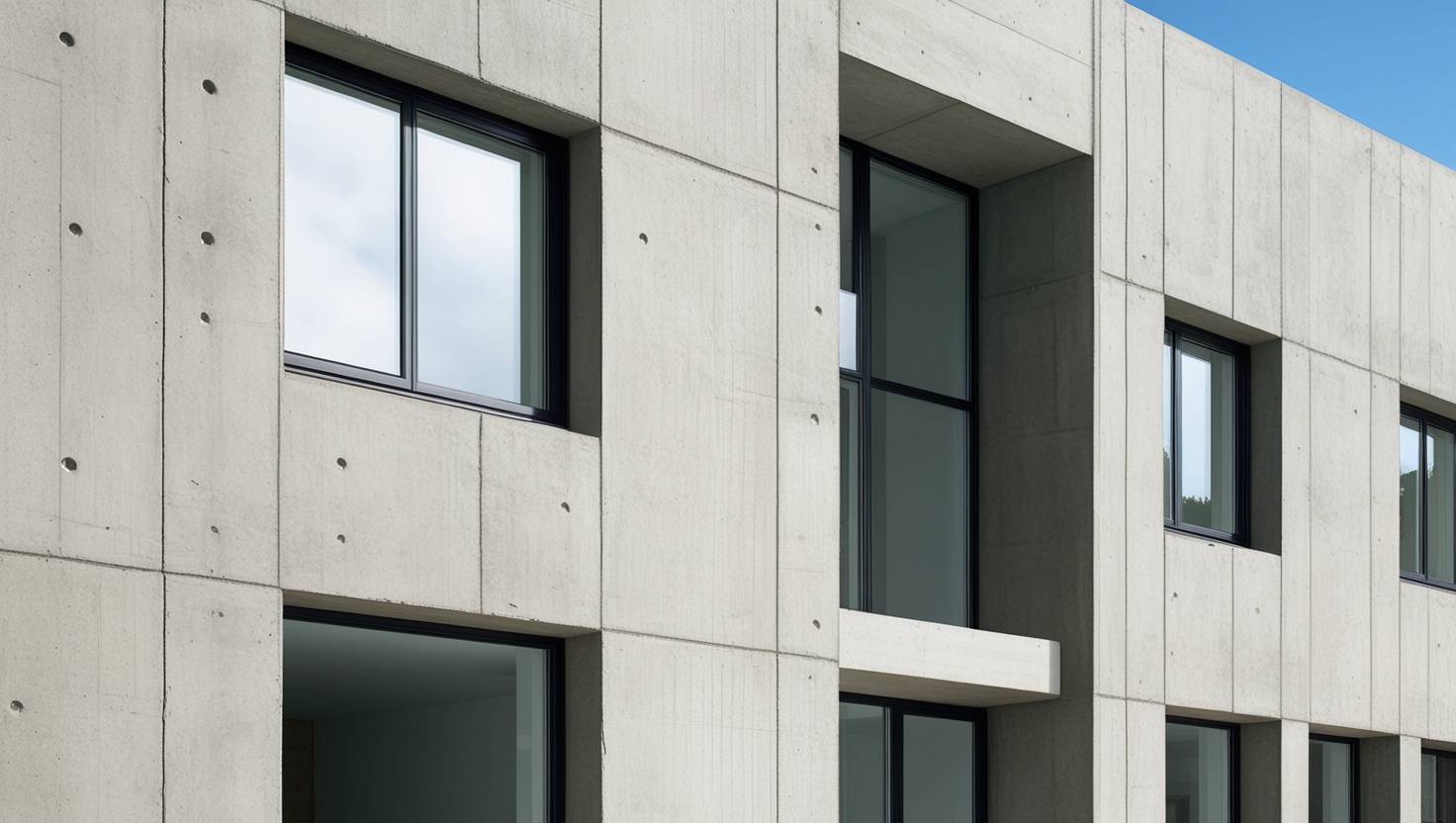When it comes to building construction and energy efficiency, insulation plays a crucial role in determining how well a structure can maintain a comfortable interior temperature while reducing energy costs.
The Role of Insulation in Energy Efficiency
One of the key factors in assessing the effectiveness of insulation is its R-value, which is a measure of thermal resistance. The R-value indicates how well a material can resist heat flow; the higher the R-value, the better the material insulates. Concrete is widely recognized for its strength, durability, and versatility in construction, but it is not typically thought of as an insulating material.
However, concrete does have a specific R-value, and understanding this can be important for builders, architects, and homeowners looking to optimize the energy efficiency of their buildings. Concrete’s thermal properties can play a significant role in the overall insulation of a structure, especially when combined with other insulating materials or techniques.
In this article, we will explore the R-value of concrete, how it compares to other materials, and how you can enhance concrete’s insulating properties to improve the energy efficiency of your building projects.
Understanding the R-Value of Concrete
Concrete is a dense material, and while it has many benefits, its natural R-value is relatively low compared to other common insulation materials like fiberglass, foam board, or spray foam.
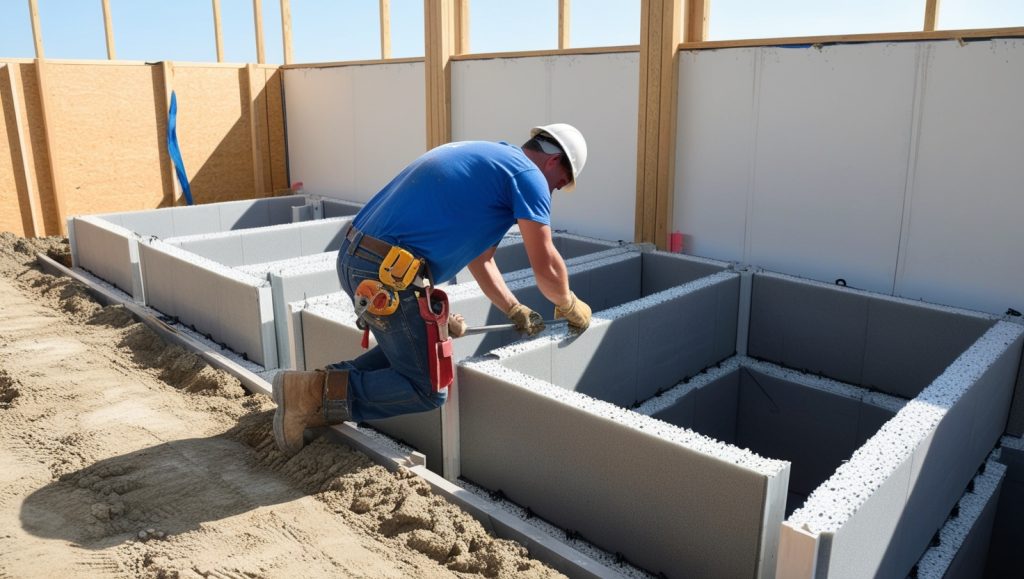
Comparing R-Values: Concrete vs. Other Insulation Materials
The R-value of concrete typically ranges from 0.1 to 0.2 per inch of thickness, which means that even a thick concrete wall may have a low overall R-value. For example, a 10-inch thick concrete wall would have an R-value of approximately 1 to 2. In comparison, a similar thickness of fiberglass insulation could have an R-value of around 30 or more, depending on the specific type of insulation used.
This comparison highlights why concrete alone is not often relied upon for its insulating properties in modern construction. However, this does not mean that concrete cannot contribute to the energy efficiency of a building.
Concrete has the unique ability to absorb, store, and release heat due to its thermal mass, which can help stabilize indoor temperatures and reduce the need for mechanical heating and cooling. This characteristic makes concrete a valuable component in energy-efficient building designs, particularly when used in conjunction with other insulating materials or systems.
What is Concrete installation R-Value?
To fully appreciate the role of concrete in insulation, it is important to understand what R-value is and how it is measured. The R-value is a measure of thermal resistance, specifically the ability of a material to resist the transfer of heat. It’s expressed as a numerical value, with advanced figures indicating better separating parcels.
The Role of Material Thickness, Density, and Thermal Conductivity
R-value is dependent on several factors, including the thickness, density, and thermal conductivity of the material in question. The thermal conductivity of a material is a measure of how fluently heat can pass through it. Materials with low thermal conductivity are better insulators and have higher R-values.
The thickness of the material also plays a significant role in determining the R-value, as thicker materials provide greater resistance to heat flow. Density can influence the R-value as well, with denser materials often having lower R-values because they allow heat to pass through more easily.
In the context of building construction, R-value is a critical factor in determining how well a structure can maintain comfortable interior temperatures and reduce energy consumption. Insulation materials with high R-values are commonly used in walls, roofs, and floors to minimize heat loss in winter and heat gain in summer, thereby improving the energy efficiency of buildings.
Concrete’s Thermal Mass: A Hidden Asset
Concrete, as a building material, has a relatively low R-value due to its high density and moderate thermal conductivity. This means that on its own, concrete is not the best insulator compared to materials like fiberglass or foam, which are specifically designed to provide high levels of thermal resistance.

However, concrete’s low R-value does not tell the whole story when it comes to its role in energy-efficient building design. The thermal mass of concrete can be an asset in certain climates and applications, as it allows the material to absorb and store heat during the day and release it slowly at night.
This process can help to stabilize indoor temperatures and reduce the need for mechanical heating and cooling, which can lead to energy savings over time. For this reason, concrete is often used in combination with other insulating materials to create a building envelope that provides both structural strength and energy efficiency.
Enhancing Concrete’s Insulation
Given that concrete’s natural R-value is low, builders and architects often seek ways to enhance its insulating properties to improve the overall energy efficiency of a structure. One of the most effective methods for doing this is to combine concrete with other materials that have higher R-values. There are several approaches to enhancing the insulation of concrete, each with its own benefits and considerations.
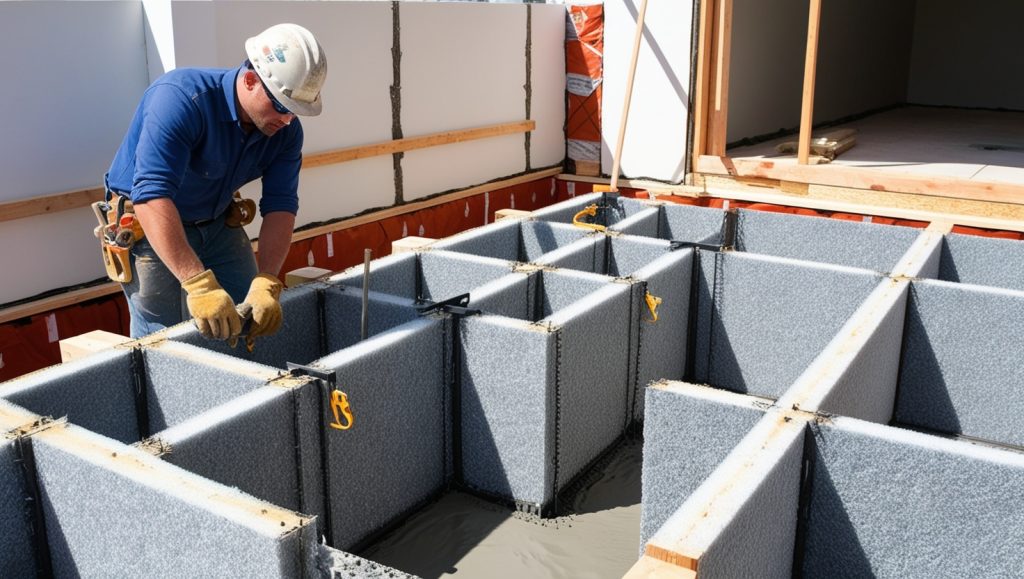
Using Insulated Concrete Forms (ICFs) for Enhanced Insulation
One popular method is the use of Insulated Concrete Forms (ICFs). ICFs are rigid foam forms that are used as molds for pouring concrete. Once the concrete sets, the foam forms remain in place, providing a continuous layer of insulation on both sides of the concrete wall.
This combination of concrete and rigid foam insulation results in a wall system that offers both structural strength and enhanced thermal resistance. The R-value of an ICF wall can range from R-20 to R-30 or more, depending on the thickness and type of foam used.
This makes ICFs an attractive option for builders looking to construct energy-efficient homes and buildings with concrete.
Adding Exterior or Interior Insulation Layers
Another approach to improving the R-value of concrete walls is to add a layer of insulation to the exterior or interior of the concrete. Rigid foam board insulation is commonly used for this purpose, as it can be easily attached to the surface of the concrete and provides a significant boost to the overall R-value of the wall assembly.
Spray foam insulation is another option, offering the advantage of conforming to the contours of the concrete surface and filling any gaps or voids. This can create a more airtight and energy-efficient building envelope.
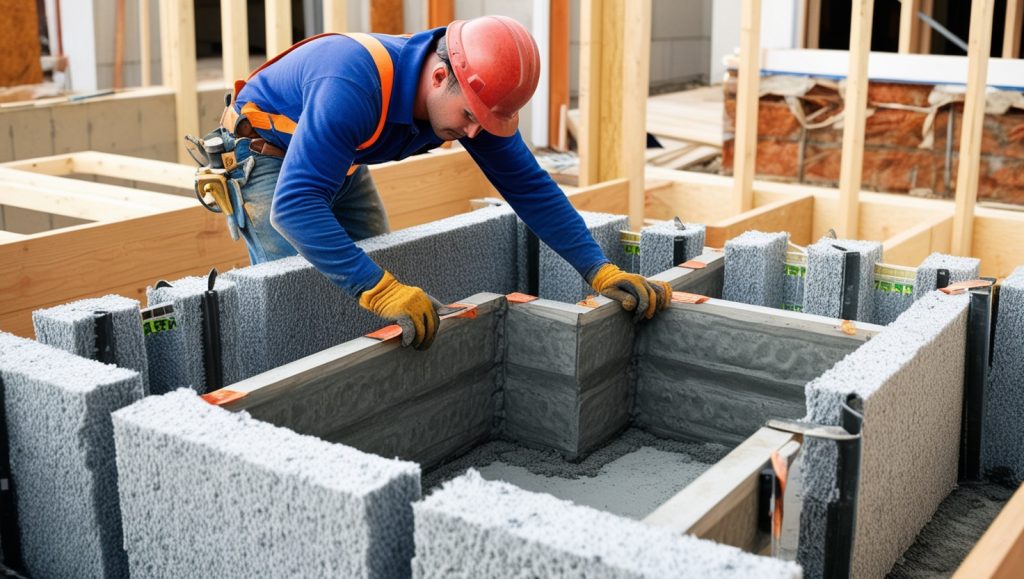
Innovative Concrete Mixes for Better Insulation
In addition to exterior and interior insulation, some modern concrete mixes are designed to have better insulating properties. For example, lightweight concrete made with expanded polystyrene (EPS) beads or other insulating aggregates can have a higher R-value than standard concrete. Air-entrained concrete, which contains tiny air bubbles distributed throughout the material, can also improve thermal resistance to some extent.
While these specialized concrete mixes may not achieve the same R-values as traditional insulation materials, they can contribute to a more energy-efficient building design when used in combination with other insulating techniques.
Impact of Concrete’s R-Value on Energy Efficiency
The impact of concrete’s R-value on a building’s overall energy efficiency can vary depending on several factors, including the climate, the building design, and the specific insulating methods used. While concrete alone may not provide high levels of insulation, it can still play a significant role in creating an energy-efficient building envelope when combined with other materials and techniques.
Thermal Mass and Temperature Stabilization
One of the key benefits of concrete in energy-efficient construction is its thermal mass. Thermal mass refers to the capability of a material to absorb, store, and release heat. Concrete’s high density allows it to absorb heat during the day, when temperatures are higher, and release it slowly at night, when temperatures drop.
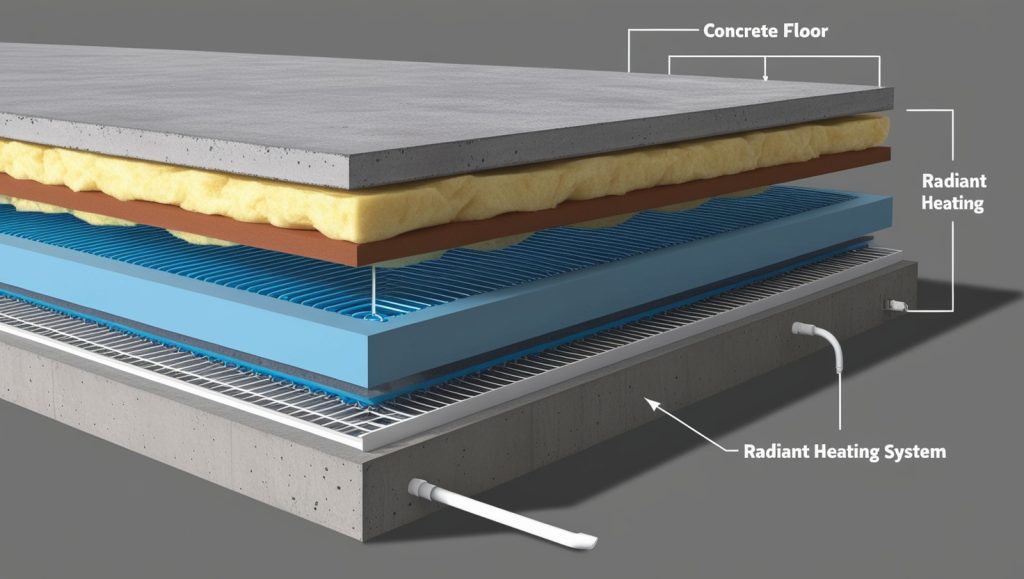
This can help to moderate indoor temperatures and reduce the need for mechanical heating and cooling systems, leading to energy savings over time. In climates with significant temperature fluctuations between day and night, the thermal mass of concrete can be particularly beneficial. By smoothing out temperature swings, concrete can reduce the demand on heating and cooling systems, which in turn can lower energy consumption and utility bills.
In addition to its thermal mass properties, concrete can also contribute to energy efficiency when used in combination with other insulating materials. For example, a concrete wall with an added layer of rigid foam insulation or spray foam can provide both structural strength and high levels of thermal resistance. This type of construction can help to minimize heat loss in winter and prevent heat gain in summer, making the building more comfortable and energy-efficient year-round.
Concrete Floors and Radiant Floor Heating Systems
It is also worth noting that the R-value of concrete floors can have an impact on a building’s energy efficiency. Like walls, concrete floors have a low R-value, but they are often paired with radiant floor heating systems to offset this limitation.

Radiant floor heating systems provide direct heat to the living space, improving comfort and reducing the need for additional heating sources. Adding an insulating underlayment or a layer of rigid foam board beneath the concrete slab can further improve the floor’s thermal resistance and contribute to overall energy efficiency.
Optimizing Concrete Insulation for Different Climates
The importance of enhancing the R-value of concrete varies depending on the climate in which the building is located.
Cold Climates: Maximizing Heat Retention
In colder climates, where heating demands are high, improving the insulation of concrete walls and floors is critical to reduce energy consumption and maintain a comfortable indoor environment. In these regions, the use of Insulated Concrete Forms (ICFs), exterior insulation, or other methods to increase the R-value of concrete structures can be particularly beneficial. By creating a more energy-efficient building envelope, these techniques can help to lower heating costs and reduce the building’s overall environmental impact.
Warm Climates: Preventing Heat Gain
In warmer climates, the focus may be more on preventing heat gain and keeping the interior of the building cool. In these cases, exterior insulation methods or reflective coatings on concrete surfaces might be prioritized to reduce the amount of heat absorbed by the building.
Additionally, the thermal mass of concrete can still be an asset in warm climates, as it can help to stabilize indoor temperatures and reduce the need for air conditioning. However, the specific insulating strategies used may differ from those employed in colder regions, with an emphasis on minimizing heat gain rather than maximizing heat retention.
Concrete’s Role in Residential vs. Commercial Buildings
Another factor to consider is the type of building and its intended use. For example, residential buildings may have different insulation requirements than commercial or industrial structures. In residential construction, comfort and energy efficiency are often top priorities, leading to the use of high-R-value insulation materials and techniques.
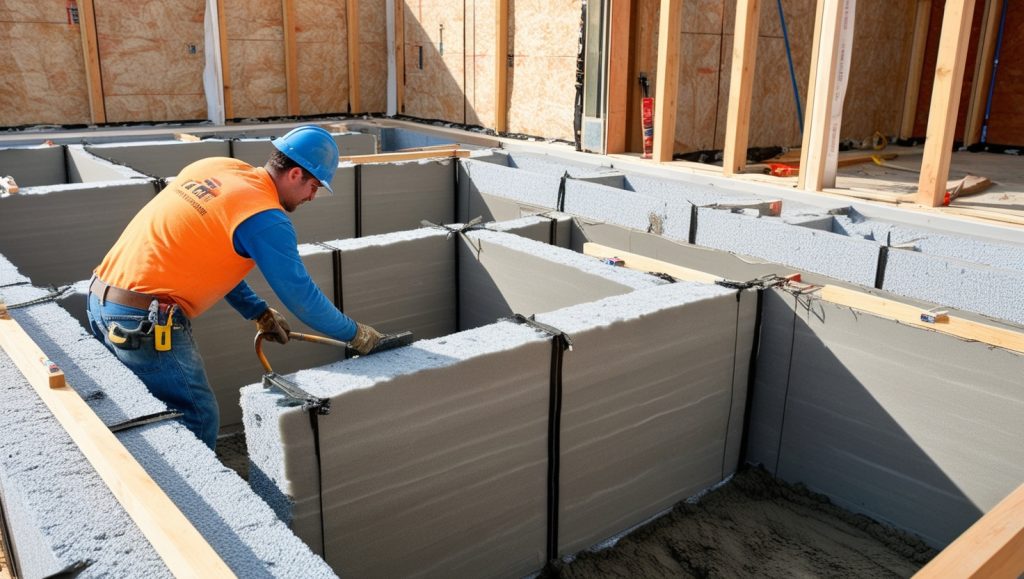
In contrast, commercial or industrial buildings may have different thermal performance requirements, depending on their size, layout, and the type of activities taking place within them. In these cases, the choice of insulating materials and methods will depend on a variety of factors, including the building’s design, occupancy patterns, and energy usage goals.
Regardless of the climate or building type, enhancing the R-value of concrete structures can contribute to a more energy-efficient and sustainable built environment. By combining concrete with other insulating materials and leveraging its thermal mass properties, builders and architects can create structures that are both durable and energy-efficient, helping to reduce energy consumption and lower greenhouse gas emissions.
Conclusion
Understanding the R-value of concrete and how to enhance it is essential for anyone involved in building or retrofitting structures with an emphasis on energy efficiency. While concrete itself has a low R-value, it can still play a significant role in creating an energy-efficient building envelope when combined with other insulating materials and techniques.
The thermal mass of concrete allows it to absorb, store, and release heat, which can help to stabilize indoor temperatures and reduce the need for mechanical heating and cooling. This characteristic makes concrete a valuable component in energy-efficient building designs, particularly in climates with significant temperature fluctuations.
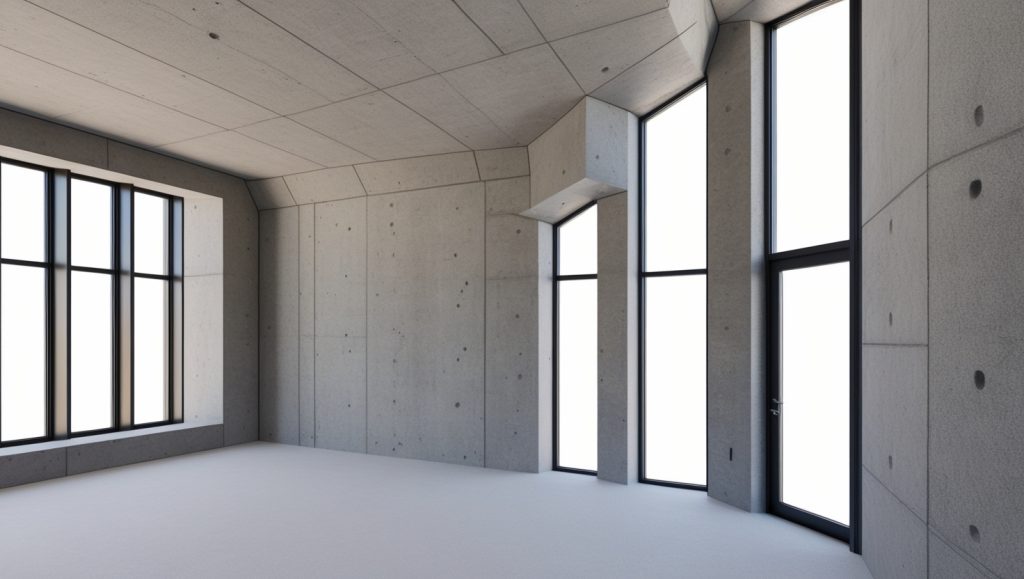
There are several methods for enhancing the insulation of concrete, including the use of Insulated Concrete Forms (ICFs), adding insulation layers to the exterior or interior of concrete walls, and using modern concrete mixes with better insulating properties. Each of these approaches offers its own benefits and can contribute to a more energy-efficient building design.
By carefully considering the R-value of concrete and the specific needs of your building project, you can create structures that are both strong and energy-efficient. Whether you are constructing a new building or retrofitting an existing one, understanding how to optimize the thermal performance of concrete is key to achieving long-term energy savings and reducing the environmental impact of your construction projects.
Future Trends in Concrete Insulation and Energy Efficiency
As building codes and energy efficiency standards continue to evolve, the importance of R-value in construction will only grow. By staying informed about the latest developments in insulation technology and best practices, you can ensure that your buildings are well-equipped to meet the demands of a more energy-conscious world.
If you want to get knowledge about “how to get cat urine out of concrete”. click here
FAQs
The R-value of concrete typically ranges from 0.1 to 0.2 per inch of thickness, which is lower than most insulating materials. Concrete is not commonly relied upon for insulation but has unique thermal mass properties that contribute to energy efficiency.
Concrete’s R-value is significantly lower than materials like fiberglass, foam board, or spray foam. For example, a 10-inch thick concrete wall has an R-value of 1 to 2, while fiberglass insulation of the same thickness can have an R-value of 30 or more.
No, concrete alone has a low R-value and is not a good insulator. However, it can contribute to energy efficiency when combined with other insulation materials due to its thermal mass, which helps regulate indoor temperatures.
Thermal mass refers to a material’s ability to absorb, store, and release heat. Concrete has high thermal mass, meaning it can absorb heat during the day and release it slowly at night, reducing the need for mechanical heating and cooling.
You can enhance the insulation of concrete by using Insulated Concrete Forms (ICFs), adding layers of rigid foam or spray foam insulation, or using modern concrete mixes with improved insulating properties.
ICFs are rigid foam forms used as molds for pouring concrete, which remain in place after the concrete sets, providing continuous insulation on both sides of the wall. This significantly increases the R-value of the wall, often ranging from R-20 to R-30.
Yes, concrete floors generally have a low R-value, so adding an insulating underlayment or a layer of foam board beneath the slab is often necessary to improve thermal resistance, especially if radiant floor heating systems are used.
In colder climates, improving concrete’s R-value is crucial for reducing heat loss. In warmer climates, the focus shifts to preventing heat gain. In both cases, adding insulation to concrete structures can help improve energy efficiency.
Yes, modern concrete mixes like lightweight concrete with insulating aggregates or air-entrained concrete can have slightly higher R-values than standard concrete, though they still need to be combined with other insulating materials for optimal performance.
R-value is important because it determines how well a material resists heat flow. Buildings with high-R-value materials in walls, floors, and roofs use less energy for heating and cooling, leading to lower energy bills and reduced environmental impact.
